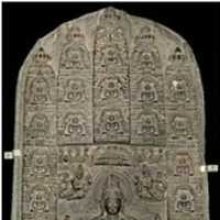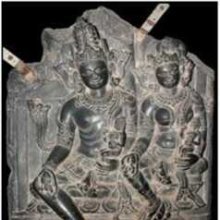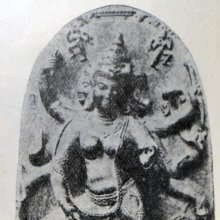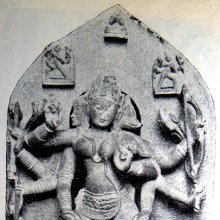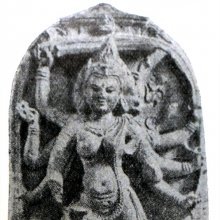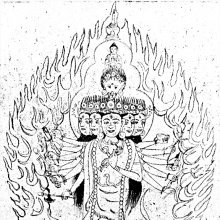Rajshahi: 2 definitions
Introduction:
Rajshahi means something in the history of ancient India, Hindi. If you want to know the exact meaning, history, etymology or English translation of this term then check out the descriptions on this page. Add your comment or reference to a book if you want to contribute to this summary article.
Images (photo gallery)
India history and geography
Source: archive.org: Personal and geographical names in the Gupta inscriptionsRajshahi, Bogra and Dinajpur are districts possibly corresponding to the ancient Ḍavāka according to V. A. Smith. But as these districts were not actually incorporated in the Gupta dominions. Ḍavāka is a place-name without suffix and is mentioned in the Gupta inscription No. 1. The Gupta empire (r. 3rd-century CE), founded by Śrī Gupta, covered much of ancient India and embraced the Dharmic religions such as Hinduism, Buddhism and Jainism.

The history of India traces the identification of countries, villages, towns and other regions of India, as well as mythology, zoology, royal dynasties, rulers, tribes, local festivities and traditions and regional languages. Ancient India enjoyed religious freedom and encourages the path of Dharma, a concept common to Buddhism, Hinduism, and Jainism.
Languages of India and abroad
Hindi dictionary
Source: DDSA: A practical Hindi-English dictionaryRajshahi in Hindi refers in English to:—(a) royal, regal, kingly..—rajshahi (राजशाही) is alternatively transliterated as Rājaśāhī.
...
See also (Relevant definitions)
Full-text: Vatanadi, Rajashahi, Davaka, Varendri, Pundravardhanabhukti, Bogra, Dinajpur, Pundra, Paharpur, Pundradesha, Bhukti, Somapura, Pundravardhana.
Relevant text
Search found 12 books and stories containing Rajshahi; (plurals include: Rajshahis). You can also click to the full overview containing English textual excerpts. Below are direct links for the most relevant articles:
Jain Remains of Ancient Bengal (by Shubha Majumder)
Archaeological sites in Rajsahi (Rajsahi Division, Bangladesh) < [Chapter 4 - Distribution of Sites Yielding Jaina Remains]
Archaeological sites in Surohar (Uttar Dinajpur District) < [Chapter 4 - Distribution of Sites Yielding Jaina Remains]
Jainism in ancient Bengal during the Gupta Period < [Chapter 3 - Historical Background of Jainism in Ancient Bengal]
Bhagavati-sutra (Viyaha-pannatti) (by K. C. Lalwani)
Vastu-shastra (5): Temple Architecture (by D. N. Shukla)
Temples of Mayūrbhañja < [Chapter 12 - History of Hindu Temples (Prāsādas and Vimānas)]
Serpent Power (Kundalini-shakti), Introduction (by Arthur Avalon)
Aboriginal Women’s Speechless Communication < [October – December, 2005]
Expansion of the Gupta Empire < [May-June, 1929]
A History of Indian Philosophy Volume 2 (by Surendranath Dasgupta)
Part 4 - Teachers and Pupils in Vedānta < [Chapter XI - The Śaṅkara School of Vedānta (continued)]
